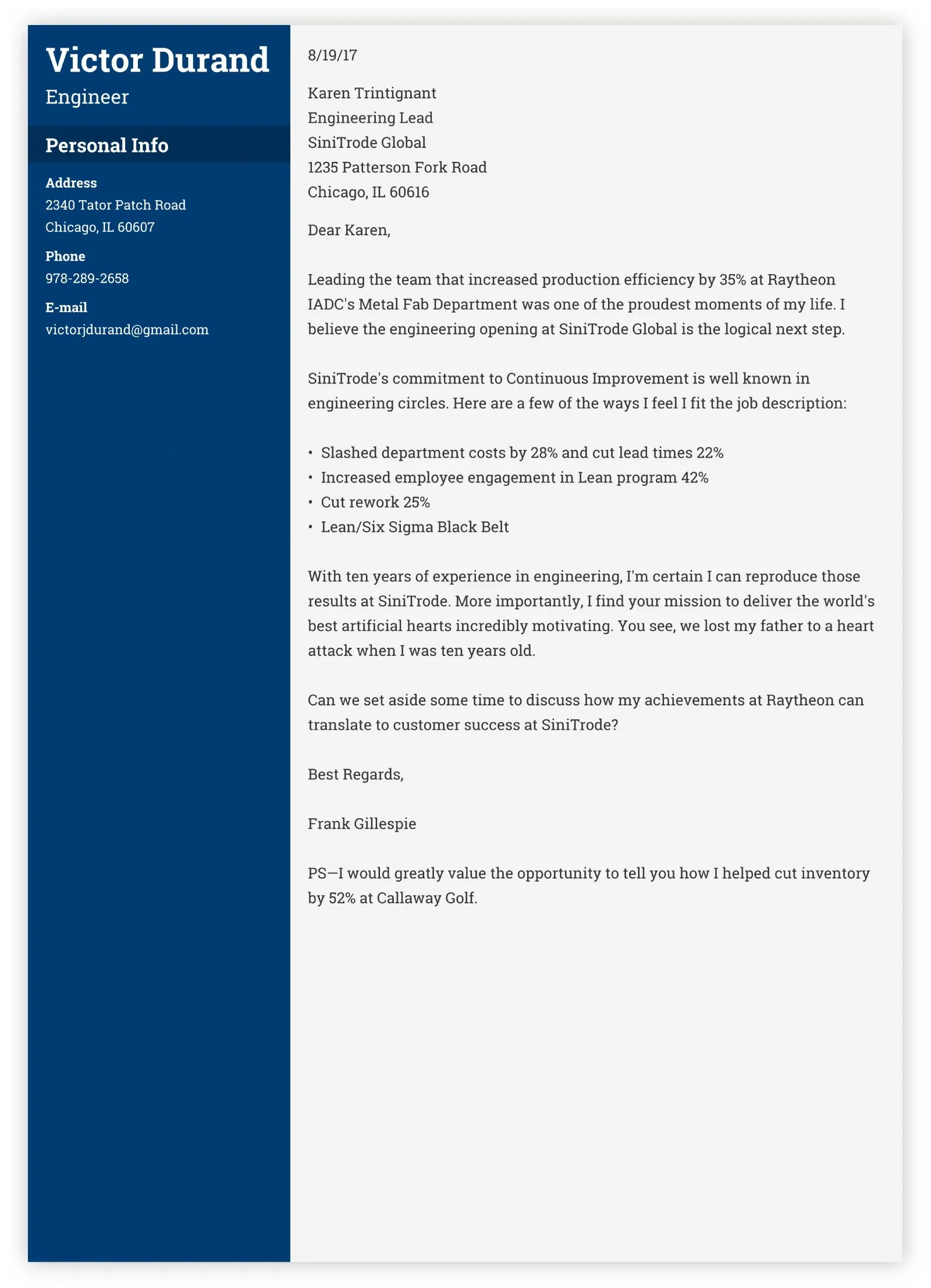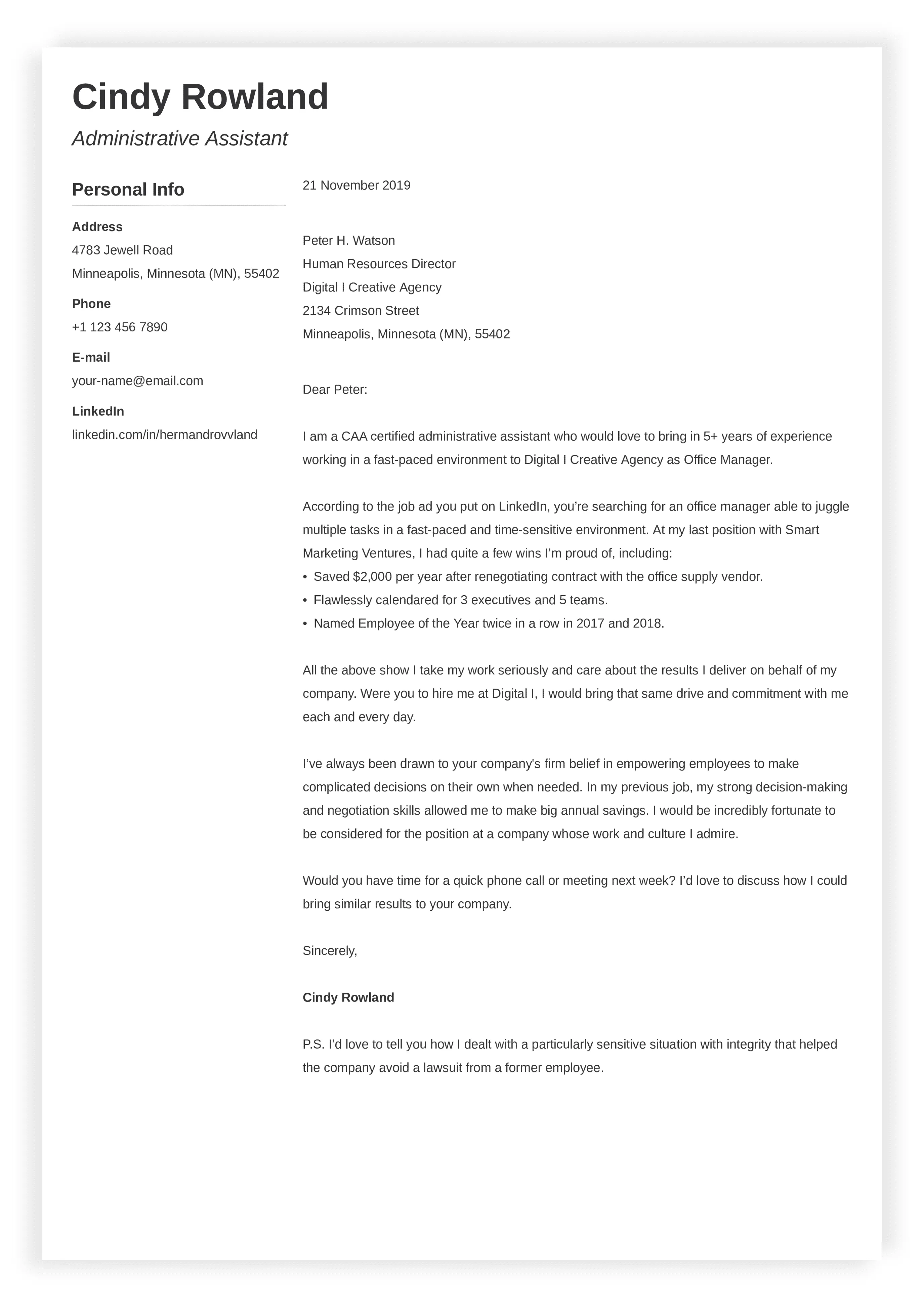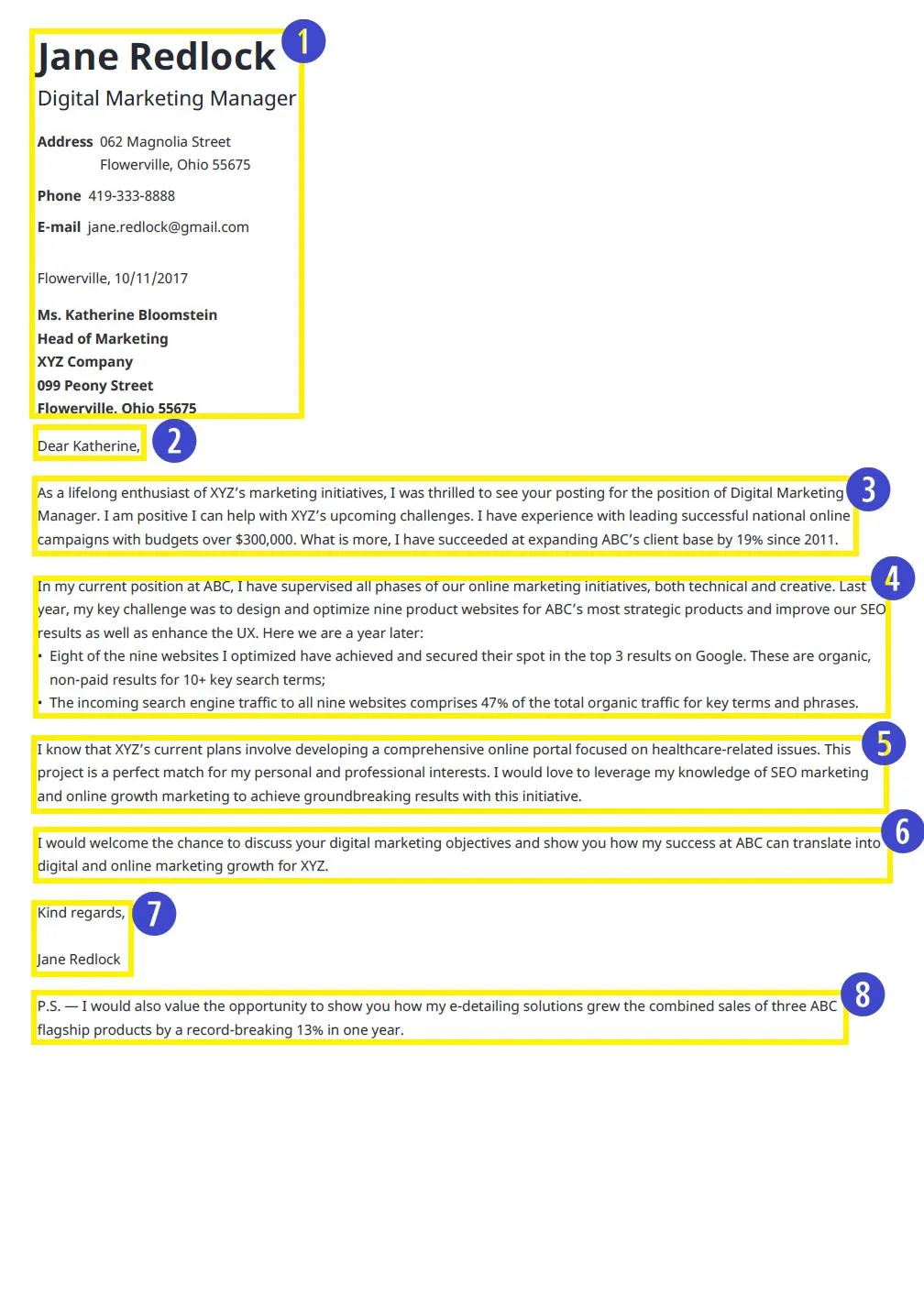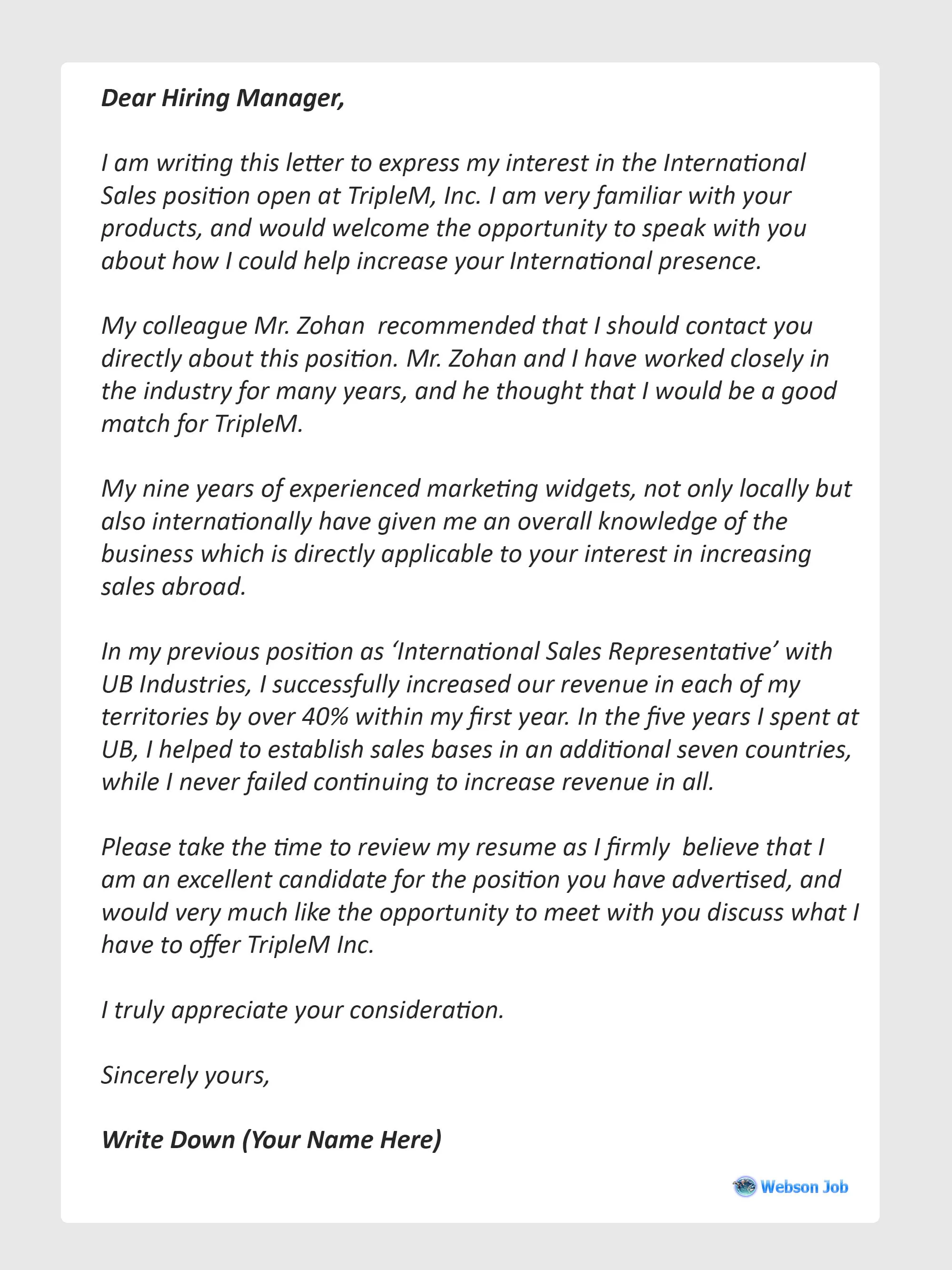Understanding the Purpose of a Cover Letter
A cover letter is more than just a formality; it’s your personal introduction to a potential employer. It serves as a crucial tool in your job application, providing an opportunity to showcase your personality, highlight your skills, and explain why you’re the perfect fit for the role. Think of it as your chance to make a memorable first impression. Unlike a resume, which provides a factual overview of your experience, a cover letter allows you to tell a story, connecting your qualifications to the specific requirements of the job and the needs of the company. It’s your chance to demonstrate your writing skills and express your enthusiasm for the position. A well-crafted cover letter can significantly increase your chances of landing an interview.
Why a Cover Letter Matters
In a competitive job market, a cover letter can set you apart from other applicants. It shows that you’ve taken the time to understand the company and the specific role you’re applying for. It allows you to elaborate on your skills and experiences in a way that a resume can’t. Hiring managers often use cover letters to gauge your communication skills, writing proficiency, and attention to detail. Moreover, a compelling cover letter can help you address any gaps in your resume or explain why you’re making a career change. It’s your opportunity to connect with the hiring manager on a more personal level and express your genuine interest in the position and the company culture.
Who Should You Address Your Cover Letter To?

One of the most important aspects of writing a cover letter is knowing who to address it to. Addressing your cover letter to the correct person demonstrates that you’ve done your research and are genuinely interested in the position. It shows attention to detail and a proactive approach, qualities that are highly valued by employers. Generic salutations, such as “To Whom It May Concern,” often make your application seem impersonal and less likely to grab the reader’s attention. Taking the time to find the hiring manager’s name or the specific person responsible for reviewing applications significantly increases the impact of your letter.
Researching the Hiring Manager
The first step in knowing who to address your cover letter to is to research the hiring manager. This often requires some online investigation, but the effort is worthwhile. Start by checking the job posting itself; sometimes, the name of the person you should address the letter to is provided in the description. If it is not listed, explore the company’s website, looking for a “Meet the Team” or “About Us” section. You might find the name of the hiring manager, the team lead, or someone in the HR department responsible for recruitment. LinkedIn is also an invaluable resource, allowing you to search for employees at the company and identify the relevant individuals. Look for people with titles like “Hiring Manager,” “Recruiter,” or the manager of the specific team you want to join.
Where to Find the Hiring Manager’s Name
There are several places to find the hiring manager’s name. The job posting is the first place to look; the name is sometimes included in the details. The company website’s ‘About Us’ or ‘Meet the Team’ sections can provide valuable information. LinkedIn is a powerful tool; search for employees at the company, specifically those in HR or with management roles. Websites like Glassdoor might also provide insights, although information can sometimes be outdated. If you have any contacts within the company, reaching out to them can also help you identify the right person. Remember to cross-reference the information you find from multiple sources to ensure accuracy.
What to Do If You Can’t Find a Name

Sometimes, despite your best efforts, you cannot find the hiring manager’s name. In such cases, it’s essential to use a professional and thoughtful approach. Instead of “To Whom It May Concern,” consider using a more specific and personalized salutation. For example, you can address the letter to the “Hiring Manager,” “Recruiting Team,” or the “[Department] Team.” If you know the department, you can address it to the team lead or the manager of the department. Another approach is to call the company’s HR department and politely ask who is in charge of reviewing applications for the specific position. This shows initiative and a genuine interest in the role. Remember to always maintain a professional tone and avoid generic phrases.
Addressing the Cover Letter: Formal vs. Informal
The salutation you use in your cover letter sets the tone for your entire communication. The choice between a formal and an informal salutation depends on the company culture, the job itself, and the level of formality you perceive in the organization. For most professional settings, a formal salutation is recommended. This demonstrates respect and professionalism. However, in some creative or informal environments, a less formal approach might be appropriate. Always err on the side of professionalism if you are unsure, and tailor your approach based on your research of the company’s culture and values.
Formal Salutations
Formal salutations are the safest and most widely accepted approach for a cover letter. These greetings demonstrate respect and a professional demeanor. The most common formal salutation is “Dear Mr./Ms./Mx. [Last Name],” where you address the hiring manager by their last name. This is appropriate in almost all professional contexts. If you are unsure of the gender or prefer not to assume, using “Mx.” is a respectful and inclusive alternative. Other formal salutations include “Dear Hiring Manager,” or “Dear [Department] Team,” if you cannot find a specific name. Always ensure that you spell the name correctly and that you have the correct title. These details show your attention to detail and consideration for the recipient.
Informal Salutations

Informal salutations can be appropriate in certain situations, such as when you have an existing relationship with someone at the company or when the company culture is known to be relaxed. These greetings can create a more conversational tone and make your letter more personal. Examples include “Dear [First Name],” which is suitable if you know the person well or have been instructed to use their first name. Another option is “Hello [Name],” which is less formal but still respectful. However, use informal salutations with caution. If you are unsure about the company culture, it’s better to stick to a formal greeting. Always ensure your tone is appropriate and professional, even with a more casual salutation.
Formatting Your Cover Letter for Success
Proper formatting is essential to make your cover letter easy to read and professional-looking. A well-formatted cover letter showcases your attention to detail and reflects positively on your writing and organizational skills. Begin by using a standard business letter format, which includes your contact information, the date, and the recipient’s contact information at the top. Use a clear, easy-to-read font like Arial, Times New Roman, or Calibri in a 10-12 point size. The font should be consistent throughout the document. Use single spacing within paragraphs and double spacing between paragraphs. Align your text to the left, and avoid using full justification, as this can sometimes make the text harder to read. Keep your letter concise and focused, aiming for one page in length.
Key Elements to Include in Your Cover Letter
A well-structured cover letter should include several key elements to effectively communicate your qualifications and enthusiasm. First, start with a compelling opening paragraph that grabs the reader’s attention and states your interest in the position. The body paragraphs should highlight your relevant skills and experience, providing specific examples to demonstrate your abilities. Make sure to tailor these examples to the job requirements. Close your letter with a strong closing paragraph, restating your interest, and including a call to action, such as expressing your eagerness to discuss your qualifications further. Throughout the letter, maintain a professional tone, use proper grammar and spelling, and proofread your work carefully.
Opening Paragraph: Hook the Reader

The opening paragraph is your first and often only chance to make a strong impression. It should immediately capture the reader’s attention and clearly state the position you are applying for. Instead of simply restating the job title, try to highlight what excites you about the opportunity or what makes you a strong candidate. Consider mentioning something specific that drew you to the company or the role. Be enthusiastic and concise. Avoid generic phrases; instead, demonstrate a genuine interest in the position and the company. This paragraph should set the tone for the rest of your letter, making the reader want to continue reading and learn more about you.
Body Paragraphs: Highlight Your Skills
The body paragraphs of your cover letter are where you provide evidence of your qualifications. These paragraphs should expand on the skills and experiences mentioned in your resume, providing specific examples of how you have demonstrated these skills in the past. Focus on the skills and experiences that are most relevant to the job requirements, and tailor your examples to show how you can contribute to the company’s success. Use the STAR method (Situation, Task, Action, Result) to structure your examples. Briefly describe the situation, the task you were assigned, the action you took, and the positive result of your actions. Quantify your accomplishments whenever possible, providing metrics to illustrate your impact. By using specific examples and demonstrating your value, you can convince the hiring manager that you are a strong candidate.
Closing Paragraph: Call to Action
Your closing paragraph is your final opportunity to leave a lasting impression. Reiterate your interest in the position and summarize your qualifications. Express your enthusiasm for the opportunity and reiterate your belief that you are a good fit for the company. Include a clear call to action, such as expressing your eagerness to discuss your qualifications further in an interview. Thank the hiring manager for their time and consideration. Keep the tone professional, and avoid any overly casual or informal language. A strong closing paragraph reinforces your interest and encourages the hiring manager to take the next step, leading to a successful job application.
Proofreading and Editing Your Cover Letter

Proofreading and editing are critical steps in ensuring your cover letter is polished and professional. Errors in grammar, spelling, and punctuation can undermine your credibility and make a negative impression on the hiring manager. Before submitting your letter, carefully review it for any mistakes. Consider using grammar and spell-checking tools, but remember that these tools are not foolproof. Ask a friend, family member, or career counselor to review your letter for feedback. They may catch errors that you missed. Ensure that the formatting is consistent, the font is readable, and the letter is well-organized. A well-proofread and edited cover letter demonstrates your attention to detail and professionalism, increasing your chances of getting noticed by the hiring manager.
